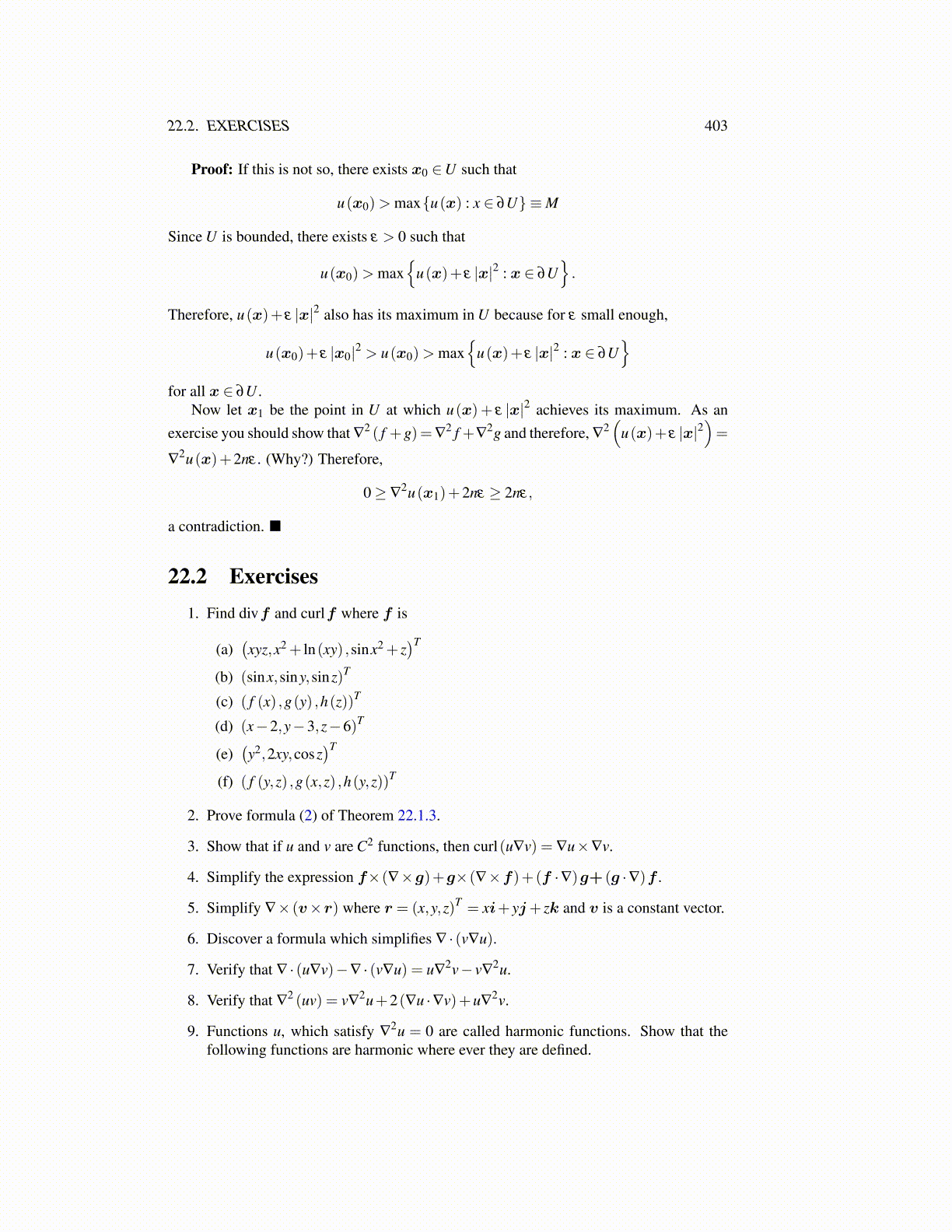
22.2. EXERCISES 403
Proof: If this is not so, there exists x0 ∈U such that
u(x0)> max{u(x) : x ∈ ∂U} ≡M
Since U is bounded, there exists ε > 0 such that
u(x0)> max{
u(x)+ ε |x|2 : x ∈ ∂U}.
Therefore, u(x)+ ε |x|2 also has its maximum in U because for ε small enough,
u(x0)+ ε |x0|2 > u(x0)> max{
u(x)+ ε |x|2 : x ∈ ∂U}
for all x ∈ ∂U .Now let x1 be the point in U at which u(x) + ε |x|2 achieves its maximum. As an
exercise you should show that ∇2 ( f +g)=∇
2 f +∇2g and therefore, ∇
2(
u(x)+ ε |x|2)=
∇2u(x)+2nε . (Why?) Therefore,
0≥ ∇2u(x1)+2nε ≥ 2nε,
a contradiction. ■
22.2 Exercises1. Find divf and curlf where f is
(a)(xyz,x2 + ln(xy) ,sinx2 + z
)T
(b) (sinx,siny,sinz)T
(c) ( f (x) ,g(y) ,h(z))T
(d) (x−2,y−3,z−6)T
(e)(y2,2xy,cosz
)T
(f) ( f (y,z) ,g(x,z) ,h(y,z))T
2. Prove formula (2) of Theorem 22.1.3.
3. Show that if u and v are C2 functions, then curl(u∇v) = ∇u×∇v.
4. Simplify the expression f×(∇×g)+g×(∇×f)+(f ·∇)g+ (g ·∇)f .
5. Simplify ∇× (v×r) where r = (x,y,z)T = xi+ yj+ zk and v is a constant vector.
6. Discover a formula which simplifies ∇ · (v∇u).
7. Verify that ∇ · (u∇v)−∇ · (v∇u) = u∇2v− v∇
2u.
8. Verify that ∇2 (uv) = v∇
2u+2(∇u ·∇v)+u∇2v.
9. Functions u, which satisfy ∇2u = 0 are called harmonic functions. Show that the
following functions are harmonic where ever they are defined.